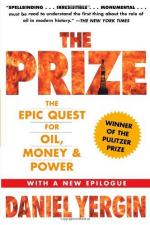|
This section contains 1,016 words (approx. 3 pages at 400 words per page) |

|
Part 1, Chapter 4 Summary
Kerosene, gas, and candles met American demand for artificial light at the end of the 19th century, but all three presented serious health and safety problems. In 1877, Thomas Edison perfected the incandescent light bulb, commercialized his invention, and priced it competitively with gas. His first generating plant opened in 1882. Electricity offered superior light and proved instantly irresistible. Standard's initial market was threatened, but the company subsequently developed a new and more potent one. Henry Ford's gasoline-fueled "horseless carriage" won out over steam- and electricity-driven challengers, and automobiles became a status symbol. Gasoline changed from being a novelty byproduct of crude oil into a valuable commodity. At the same time, Standard found its position in East Coast and overseas sales challenged by the creation of an unattainable, independent Producers' and Refiners' Oil Company and the Pure Oil Company.
Prospects for new oil...
(read more from the Part 1, Chapter 4 Summary)
|
This section contains 1,016 words (approx. 3 pages at 400 words per page) |

|




